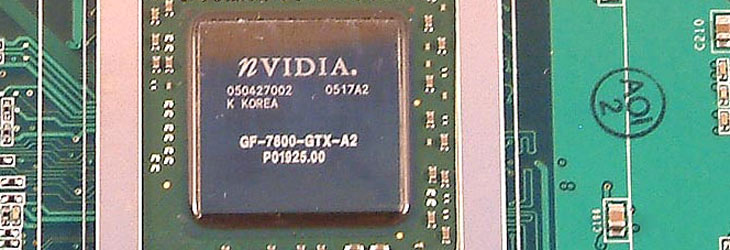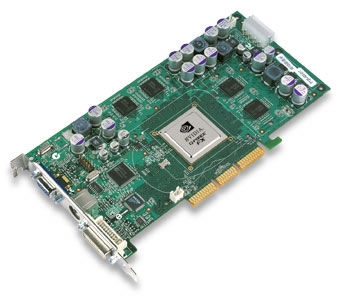On Thursday, we sat down with David Kirk for a chat about the future of NVIDIA and its technology. David is the Chief Scientist at NVIDIA: his job is to oversee the technology progression, and, simply, to create the next generations of graphics technology.
If there's a man that knows what the future holds for PC gamers, then, it's him.
We asked David how he thought the launch had gone. "I personally didn't work on it, but the team did a tremendous job. They set out to double performance from the previous generation. The hardest part was to do that and reduce power at the same time. As a techical achievement, to get 2-3 times the performance with lower power consumption is unbelievable."
 However, some sectors have criticised NVIDIA for not really introducing any new features: UltraShadow is the same; there's only really tweaks to the shader pipeline; although there is a lot more performance. Is that fair? "Whilst there may be no new visable architecture, that's because there's no new API - we're still on DirectX 9," said Kirk. "We've had a major opportunity to polish and refine the hardware. The first product for each API - in this case, GeForce FX - is a struggle. The second one hits the stride. With this, the 7800, we've put together an awesome package. It's been a great opportunity to improve."
However, some sectors have criticised NVIDIA for not really introducing any new features: UltraShadow is the same; there's only really tweaks to the shader pipeline; although there is a lot more performance. Is that fair? "Whilst there may be no new visable architecture, that's because there's no new API - we're still on DirectX 9," said Kirk. "We've had a major opportunity to polish and refine the hardware. The first product for each API - in this case, GeForce FX - is a struggle. The second one hits the stride. With this, the 7800, we've put together an awesome package. It's been a great opportunity to improve."
For more on the unseen architecture in the G70, see our news story from last week.
The subtext to this is the feeling that NVIDIA is on its third generation DirectX 9 product, whilst ATI are, with the X800, still cranking out upgraded versions of their 9700 architecture. As they make the transition to a fully Shader Model 3 architecture, they have faced a great many problems with R520 being delayed again and again.
Is ATI facing the prospect of R520 being their GeForce FX? "Well, I think that's to underestimate the FX. We know it had faults, but it paved the way for the 6800 and 7800. Without the FX architecture that we put in place, we couldn't have had two such successful generations of hardware. ATI are still waiting to make that translation, fully."
 Of course, part of the problem with the FX architecture was that they were trying to make a transition to a 130nm process at the same time as everything else. With the 520, ATI are moving to a 90nm process. Is this part of the problem? "I don't think ATI can attribute all their recent problems to process, although I'm sure they'd like to."
Of course, part of the problem with the FX architecture was that they were trying to make a transition to a 130nm process at the same time as everything else. With the 520, ATI are moving to a 90nm process. Is this part of the problem? "I don't think ATI can attribute all their recent problems to process, although I'm sure they'd like to."
So a definite maybe, then.
If there's a man that knows what the future holds for PC gamers, then, it's him.
Looking back at G70
The G70 launch - the 7800 GTX - has come and gone, though there are still other members of the GeForce 7xxx family to be introduced. Generally hailed as a stonking success, doubling the power of the 6800 series, we thought it rocked.We asked David how he thought the launch had gone. "I personally didn't work on it, but the team did a tremendous job. They set out to double performance from the previous generation. The hardest part was to do that and reduce power at the same time. As a techical achievement, to get 2-3 times the performance with lower power consumption is unbelievable."

For more on the unseen architecture in the G70, see our news story from last week.
The subtext to this is the feeling that NVIDIA is on its third generation DirectX 9 product, whilst ATI are, with the X800, still cranking out upgraded versions of their 9700 architecture. As they make the transition to a fully Shader Model 3 architecture, they have faced a great many problems with R520 being delayed again and again.
Is ATI facing the prospect of R520 being their GeForce FX? "Well, I think that's to underestimate the FX. We know it had faults, but it paved the way for the 6800 and 7800. Without the FX architecture that we put in place, we couldn't have had two such successful generations of hardware. ATI are still waiting to make that translation, fully."

So a definite maybe, then.

MSI MPG Velox 100R Chassis Review
October 14 2021 | 15:04









Want to comment? Please log in.